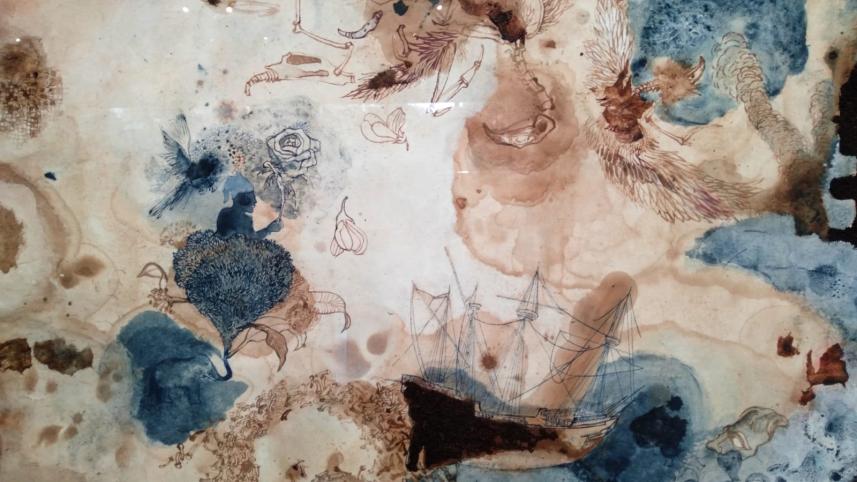‘Atlas of Dissent’: The venom of colonisation

The extensive oppression of British colonisation in the Indian subcontinent has broken the backbone and the spirit of the people in the region, for almost two hundred years. The effects of this era can still be witnessed today.
Bangladeshi artist Dhali Al Mamoon has been working on colonial history for a while and has wondered how much of it is reflected in our identity, literature, education, arts, livelihoods, environment, and thought-process. The exhibition "Atlas of Dissent" is the outcome of his research and artistry.

The inauguration of "Atlas of Dissent" took place at Bengal Shilpalay on January 27. Curated by Tanzim Wahab, the exhibition speaks of the colonial teachings that still flow through our veins. The artist has attempted to overlap this with our current reality. Technically, he has not focused on any particular conformity, rather relied on rhizomatic structures that do not have a centre, a starting point, or an ending point. However, most of the artworks are created on a circular base, reminiscing the sitting arrangement of Bengali Nokshi Kantha artisans.

There are two large pieces portraying 'The Battle of Plassey and 'The Battle of Buxar', through cartography—a form of graphic art where geographical regions are drawn on flat surfaces. Mamoon has used tea, oil, indigo, and cloves to conjure his masterpieces, as these four were the primarily ingredients snatched by the British colonisers, to export to their own country. The fusion of these elements in cartography has resulted in wonderful rhizomatic illustrations, that are also available to watch as animations—accompanied by a mix of British soldiers' band music and our own sub-continental music, creating the essence of our past colonial rule.

The large sculpture in the middle of the gallery represents the railway via which the colonisers strengthened their trade and communication. This installation is made of used slippers of rails. On this, stand three anthropomorphic creatures—with the head, palms, and feet of a coloniser, and the rest of the body similar to that of large ancient cats, who mark their territories by spreading their stink, just like the British rulers did in the sub-continent, starting with Bengal. And this entire arc of trade and commerce, the exploitation, the resources theft of spices in particular, and the systematic aggression is encapsulated on the circular bases in the gallery.
Aside from territoriality, the colonial greed and abuse on an entire region have also been displayed through bas-relief works and three-dimensional objects like skulls, uniforms, etc., using garment fabrics, threads, resin, tea, and cloves.

Another mind-boggling component of the exhibition is the moving or kinetic sculptures of wooden lords—the ever-obedient British soldiers who only know how to follow commands take shape as 'Talpatar Shepai' or 'Palm-leaf Soldiers' from the childhood memories of the artist. This metaphorical approach gives the spectators a sensory interaction with the past through the rotations and the sounds coming from them.

The entire exhibition screams of the deep-rooted corruption of the colonial rulers who bled the subcontinent dry, murdered people and their spirits. The vastness of the event leaves people wonderstruck. Bengal Shilpalay will run this open-for-all exhibition till tomorrow, April 8.




 For all latest news, follow The Daily Star's Google News channel.
For all latest news, follow The Daily Star's Google News channel.
Comments